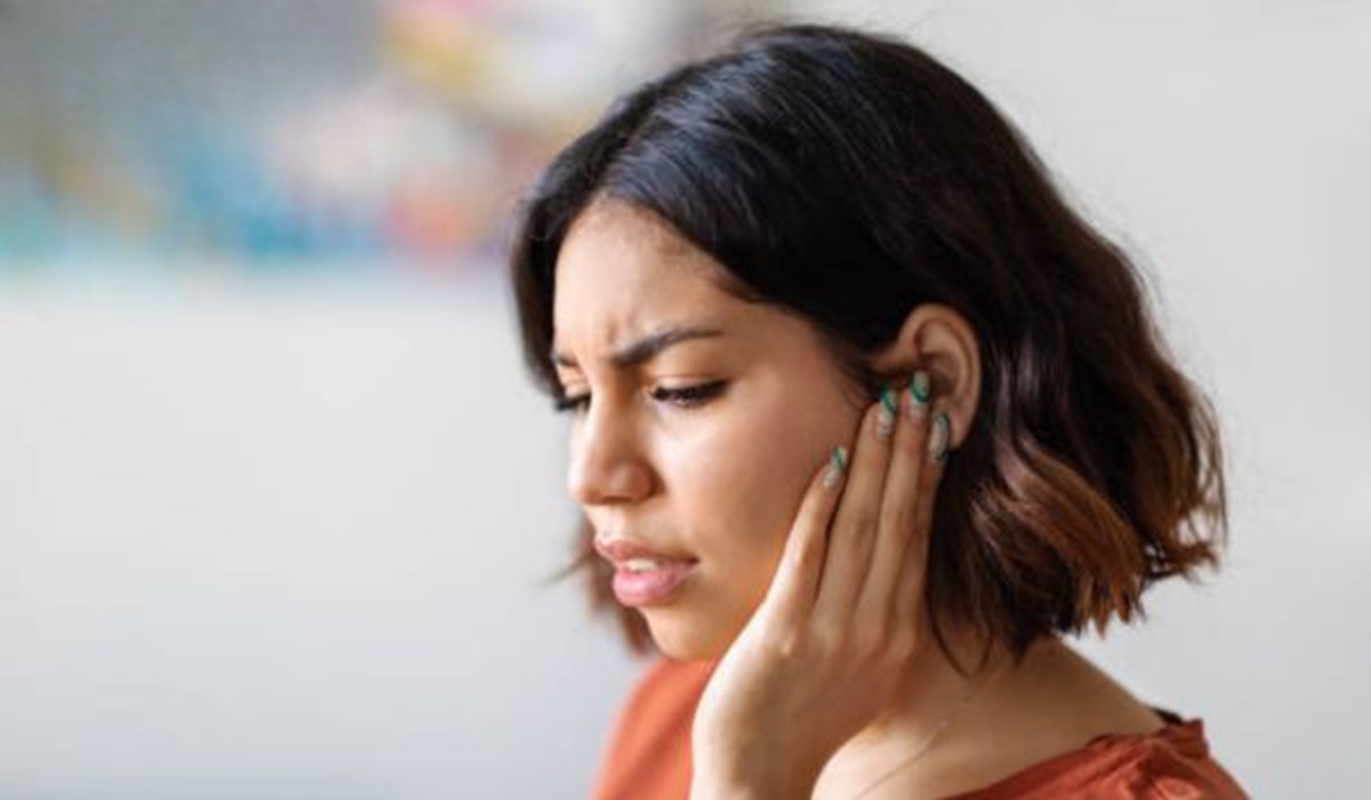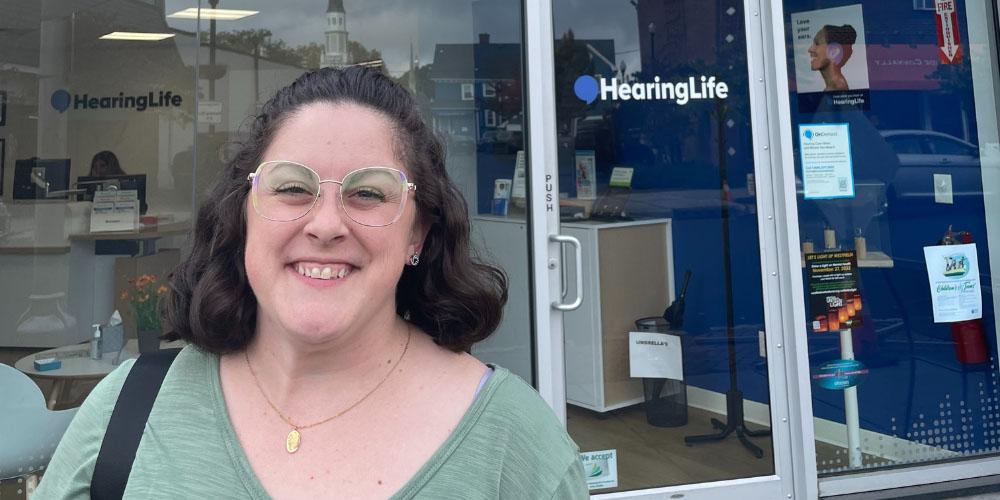
It can be tempting to reach for a cotton swab to deal with the earwax in your ears. While ear hygiene is important, cotton swabs aren’t the right tool for cleaning your ears. They can push too far into the ear, worsening earwax buildup and even injuring the eardrum or ear canal.
While cotton swabs should be avoided, there are other options to keep your ears clean. Read on to learn more about the potential dangers of cotton swabs in your ears and healthy ways to keep your ears clean.
- Earwax is a normal, naturally occurring substance that protects the ear canal.
- In general, ears are self-cleaning and don’t need additional frequent cleaning.
- Cotton swabs should not be used to clean earwax.
- Sterile water, hydrogen peroxide or softening drops can remove earwax buildups.
- Earwax removal is best left to a professional.
Earwax—also known by the medical term cerumen—is a naturally occurring waxy substance produced by cells lining the ear canal.¹ Cerumen is a mixture of dead skin cells, hair and secretions from the ceruminous and sebaceous glands.² This tacky substance serves several important roles for the ear: it traps and removes dirt and debris; it moisturizes the ear canal to prevent itching, irritation and infection; it prevents bacteria and fungi from growing in the ear; and it can even prevent wandering insects from crawling into the ear.³
A common misconception about earwax is that it’s unclean or unwanted. However, cerumen is a completely normal substance that plays a critical role in keeping the ears healthy. Another misconception is that earwax must be removed immediately when, in reality, earwax removal isn’t necessary. In most cases, earwax works its way out of the ear canal naturally.⁴
In some cases, however, earwax can build up in the ear and lead to side effects including hearing loss and damage to the ear canal. Knowing how to clean ears safely prevents those problems.
The most important part of knowing how to clean ears safely is understanding which tools to use. Cotton swabs might come immediately to mind—and if they do, you’re not alone. Cotton swabs or buds are incredibly popular tools for the ears—a 2011 study found that 68% of people admit to using cotton swabs on a weekly basis, and 76% admit to using them on a daily basis.⁵ While they may seem useful and you likely already have them in your bathroom, cotton swabs should be avoided.
Inserting cotton swabs into the ear can push earwax deeper into the ear canal, causing it to build up and affect your hearing. Pushing into the ear with a cotton swab can also be dangerous—go too far into the ear and you could damage the eardrum or the ear canal.⁶ Ear swabs are especially dangerous for children: A 20-yearlong study found that there were at least 35 emergency room visits daily in the United States for injuries related to cotton swab use, with the most injuries occurring in children under 8 years old.⁷ Adults are also at risk for injury related to ear cleaning: About 73% of ear injuries from cotton swabs are associated with ear cleaning.⁸
Not only are they dangerous, but excessive wax removal—whether with a cotton swab or another foreign object—can actually cause the body to overproduce wax, causing buildup in the ears. In most cases, your ears are producing the right amount of wax and it will exit the ear canal on its own. In short, the best practice for earwax removal safety is to leave your ears alone.
Ear specialists at Miracle-Ear agree that cotton swabs should be avoided for proper earwax removal safety. In this article about hearing loss and earwax, Dr. Victoria Zambrano, Au.D, an audiologist at Miracle-Ear, takes a very clear stance on how to clean ears safely. “Never insert anything into the ear canal, including cotton swabs,” she advises. “Doing so can push the earwax further into the ear canal, causing blockages and/or damaging the eardrum.”
While cotton swabs can be used to clean the outer ear, they and other objects, including ear candles, bobby pins or your fingers, shouldn’t be put in the ears under any circumstances.
While it’s difficult to assess damage from improper earwax removal on your own, you might experience some telltale physical symptoms. If the cotton swab scratched or damaged the ear canal or inner ear, you may experience some itching or irritation. You may also feel pain and irritation, or sense some hearing loss if the cotton swab has pushed the earwax deeper in the ear and caused a blockage.
If the cotton swab caused a damaged eardrum, symptoms include sudden pain, rapid changes in pressure, vertigo and tinnitus.⁹ You may also experience hearing loss as a result of a torn eardrum.¹⁰
You might feel the urge to clean your ears daily, or as often as you would clean other parts of the body. In reality, this much earwax cleaning is unnecessary; your ears are self-cleaning and naturally move earwax out of the ear with time. Earwax is actually a sign that your ears are perfectly healthy, properly protected and moisturized. As mentioned above, excess earwax removal can cause your ears to go into overdrive and produce too much earwax to compensate for what you have removed.
As tempting as it might be to remove your earwax, resist the urge and allow your ears to do their job. The outer ear can be cleaned for visible debris as often as necessary, but the ear canal should be left alone—and if problems arise, you should talk to a professional.
How do you know if you need your ears cleaned? There are several symptoms of earwax buildups or blockages that need to be cleaned out, ranging from minor ear discomfort to hearing loss. Some people may also experience tinnitus, vertigo or a feeling of ear fullness¹¹.
If you’ve noticed these symptoms, consider scheduling an appointment with a hearing care professional (HCP) to clean your ears safely.
If you think you might have a buildup of earwax causing hearing loss or discomfort, it’s important to know how to safely remove earwax. Below, we’ll share several gentle, non-invasive at-home techniques to find relief without damaging your ears. However, some situations require professional earwax removal.
Earwax buildup can sometimes be addressed quickly and effectively at home. Try these at-home earwax extraction techniques:
- Ear irrigation techniques: These methods are designed to promote the natural drainage of earwax. Start by flushing your ear with saline or sterile water. Carefully bathe the ear canal in the solution, then allow the solution and wax to drain onto a towel.
- Softening agents: If the wax in your ears is hard, you may need the help of a softening agent to coax it out. Carefully add a few drops of baby oil, glycerin, or hydrogen peroxide into the ear canal to soften the wax. Allow it to sit for a few minutes before tilting your head over a towel so the wax and softening materials can drain out. You may need to repeat the process a few times to loosen the earwax.
- Water solutions: Using the same techniques, you can try to dislodge a wax buildup with warm water. Use warm water in a rubber-bulb syringe and gently squirt water into the ear canal before allowing the water to drain out of your ears.
- Hydrogen peroxide: Small amounts of hydrogen peroxide can also be useful when handled with care. Carefully place a very small amount of hydrogen peroxide into the ear with a rubber-bulb syringe to soften the earwax and allow it to drain.
- There are also over the counter earwax removal kits that are available at your local pharmacy. If you are confused at to which would work best for you, discuss this with the pharmacist.
- Be sure to dry your ears completely after every procedure to prevent bacteria growth and ear infections.
Regardless of the technique, be sure to clear your ears safely. Do not use any ear irrigation methods or introduce substances such as water or hydrogen peroxide into the ear if you have a weakened immune system, ear tubes or an existing hole in your ears. Don’t try to remove earwax with any sort of tool placed into the ear canal, especially if you’re experiencing ear pain or have a hole in your eardrum. These tools can damage your ears’ delicate anatomy.
While at-home techniques can help in some cases, earwax removal is often best left to professionals. If home remedies aren’t working, or you’re experiencing pain, bleeding or drainage from the ears, it’s time to see a doctor to clean ear wax from your ears. They will be able to examine your ears and remove any stubborn blockages. These solutions might include irrigation to soften and flush out buildups or suction to pull out earwax. In some cases, your provider might use a small, curved tool called a curet to manually scrape out built-up earwax. These tools should only be used by a medical provider in a clinical setting, when getting your ears professionally cleaned.
Wondering how to safely remove ear wax? The most important thing is to avoid any highly invasive earwax removal treatments. This includes cotton swabs, bobby pins or your fingers as mentioned above, plus alternative techniques such as ear candling. Ear candling—sometimes called ear coning—involves lighting one end of a cone-shaped candle and placing the unlit end into the ear; the idea is that the heat from the flame will create suction that pulls out the wax. This is a dangerous, ineffective treatment and can cause burns and damage to the ear.
Treatments that introduce volatile or nonsterile substances into your ear should also be avoided. This includes essential oils—such as tea tree oil—which can damage the sensitive structures of the ear canal or cause bacteria to grow.
The above is the interpretation of Why Doctors Say You Should Never Use Q-Tips in Your Ears provided by Chinese hearing aid supplier Shenrui Medical. Link https://www.srmcm.com/Blog/Why_Doctors_Say_You_Should_Never_Use_Q-Tips_in_Your_Ears.html of this article is welcome to share and forward. For more hearing aid related information, please visit Blog or take a look at our Hearing aids products















